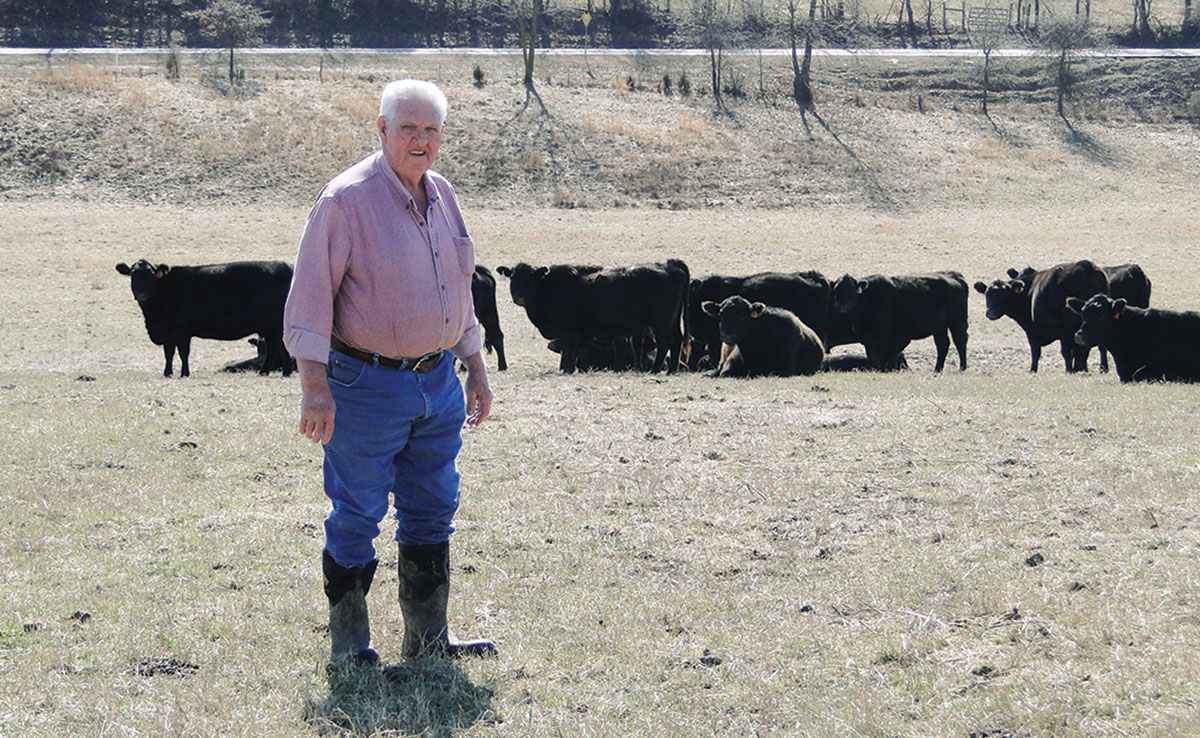
Former educator Jim Taylor continues to expand his knowledge
When Jim Taylor was a youngster, he grew up on the Buffalo River between Marshall and St. Joe, Ark.
He loved basketball but was not much interested in academics and remembers his high school graduation mostly because a flash flood that day engulfed much of the town. He then decided to go to college, because that’s what his friends were doing, and entered ag education.
“My high school ag teacher, Embery Railey, who now lives in Lead Hill, Ark., was an important role model. He gave me confidence by giving me a belief in my ability to succeed,” Jim explained.
After teaching in public school, Jim was approached to become an administrator in a new disadvantaged and handicap secondary training program in Harrison, Ark., called Twin Lakes Vocational Center, now part of North Arkansas Community College. The late Sen. Dale Bumper funded the 40-acre Springdale Northwest Technical Institute with Jim as the head administrator. The center is now the only independent vocational training center out of 24 that were in the existence at the time, with the rest being affiliated with junior colleges.
“Not everyone needs a college degree,” Jim said. “However, everyone does need marketable skills and I especially loved helping reluctant students find a pathway to success.”
In spite of declared academic reluctance, Jim is a lifelong learner. He goes to every seminar he can find including one with a partial focus on controlling fescue toxicity.
“My basic knowledge comes from textbook learning, but innovative improvements are constant. I always come away from seminars with some new knowledge,” Jim confided. “Among the most impactful innovations have been in animal medicines, combining weed control with fertilizer, and improving forage production.”
When Jim and his wife Corene purchased 304 acres in Clifty 17 years ago, Jim immediately saw the potential for raising cattle. The land was cleared though weedy and had six springs in addition to well water.
Jim credits James Roberts from Green Forest, Ark., for his success in the cattle business because of James’ more than 60 years of experience. Jim approached James about purchasing mature registered Angus cows, and purchased 32. When James delivered the cows, he offered to help Jim sell his bull calves, something he still does.
One of the most important concepts Jim learned from James was a high priority in stock selection is the ability to retain good condition throughout the winter with minimal supplemental feed as well as calving ease.
Those first cows became the seed stock for his current herd, which is made up of 82 registered Angus breeding females and 18 SimAngus females.
Bull calves are sold by private treaty, along with an occasional open heifer. Jim uses both spring and fall breeding seasons in order to keep a variety of animals in various stages of development to meet customer needs. Further, while he selects two new bulls, typically every other year, for docility and feed efficiency, he varies confirmation criteria as another way of diversifying customer choices. All bulls are semen and trichinosis tested before sale so customers are assured of getting a healthy and fertile bull. Culled animals are sold either in Green Forest or Siloam Springs.
Jim has a strong repeat clientele. In appreciation of his customers and other agricultural advocates, he holds an annual summer fish fry for 125 or more people, which serves as subtle advertising. An even more important attraction for customers is that Jim delivers bulls to their new homes so customers do not have to worry about transportation.
“I should probably retire, but animal production and bull sales provide wonderful interaction with interesting and passionate people,” Jim said.
Believing a good cattleman has to be a good forage producer in order to make money, Jim pays very close attention to his land.
He uses both chicken litter and commercial fertilizer mostly in the spring. His 65 acres of Bermuda hay ground is fertilized with commercial fertilizer while the rest is fertilized by a combination determined by price and availability. Jim defines a weed as anything unsuitable for hay or grass production and strives to keep clean fields.
In addition, his goal is to maximize the protein level in his hay by harvesting when it is a foot tall because as Bermuda, or any hay for that matter, grows taller, it loses nutritional value. Another important aspect of his forage production is annual soil testing for pH level with lime levels tested every few years. His hay ground not only produces enough hay for his own use but also for sale to others.
Jim and Corene have a busy life and active family. They have four children, a dozen grandchildren and a passel of great-grandchildren. The family is known for producing a number of educators and veterinarians, along with others in a wide-variety of careers. The farm is a favorite gathering place with youngsters especially appreciating the beautiful land and time spent with the happy couple.






